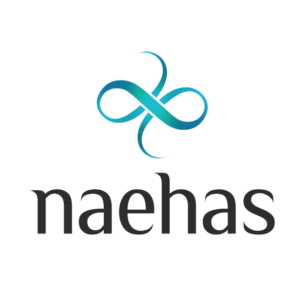As collaborative solutions partners with banks, wealth management firms, fintechs and insurance companies, we’re always monitoring the emerging trends, hot topics and current news. From ESG compliance, voluntary Community Reinvestment Act plans, regulatory updates and industry associations, there’s plenty with which to keep up. Here are excerpts from recent articles our team found particularly insightful from ABA’s online Banking Journal.
Delving into compliance and risk, a recent article dove into Community Reinvestment Act (CRA) programs and strategies. In “Building a Successful CRA Strategy and Action Plan for 2022,” by Kadince’s Jaidyn Crookston reinforced that creating an annual CRA strategy is an industry best practice that allows you to manage strategic priorities, as well as the resources available for the year ahead. She offered tips we found valuable for financial service institutions – and their CRA Compliance Officers – encouraging them to take stock of what their program has accomplished in the past year, and look forward to impacts to create in a new year. A summary is shared here:
1. Align your CRA strategy with the bank’s corporate strategy
Your bank is steadfast in serving your community. As the CRA officer, you’re responsible for leading programs and building support in the community that makes a difference. As such, key stakeholders and the executive management team should see you as a leading player in carrying out the bank strategy. Consider the bank’s corporate strategy and priorities. Once you understand the bank’s key initiatives, you can then align your Community Reinvestment Act program’s priorities to impact the entire institution, as well as the community.
When making a Community Reinvestment Act (CRA) strategy and action plan, Compliance Officers should ask these questions:
- How is the CRA program already supporting the bank’s priorities?
- Are your CRA initiatives supporting new products and services?
- What deals have you referred to the bank based on your community development activities?
- How can your CRA program support the core initiatives within the bank?
- Do you lead nonprofit partners toward bank services?
- Who do you need to coordinate with and outreach to when planning around the bank’s corporate strategy (retail, commercial lending)?
Crookston recommends that once these key questions are answered, it’s important to vet the proposed strategies with key internal stakeholders and executive management, as well as external community stakeholders.
2. Consider all key elements of your CRA program
Collaborate with different business units to ensure you’re meeting the credit needs of the community. Engage the business units to help identify performance context or new initiatives to close gaps in your assessment areas. Also, engage key internal stakeholders in the bank to maximize the reporting of the bank’s community development services, loans and investments.
 Other recommendations addressed technical aspects, timing, and training. Crookston recommends the CRA Compliance Officer create a system to ensure technical compliance with all required deadlines and activities associated with public file, public notices, sunshine provision reporting, etc. She shared an important reminder to acknowledge where you are in the CRA exam cycle. Your priorities will shift depending on whether your bank is in year one of your exam cycle, or if your exam is looming in the next quarter.
Other recommendations addressed technical aspects, timing, and training. Crookston recommends the CRA Compliance Officer create a system to ensure technical compliance with all required deadlines and activities associated with public file, public notices, sunshine provision reporting, etc. She shared an important reminder to acknowledge where you are in the CRA exam cycle. Your priorities will shift depending on whether your bank is in year one of your exam cycle, or if your exam is looming in the next quarter.
Notably, the importance of developing a plan to train key internal stakeholders, such as commercial loans officers, retail staff members and CRA team members embedded in different departments. She noted that a solid CRA strategy acknowledges the importance of ongoing training for key stakeholders responsible for carrying out the bank-wide commitment to the CRA. It’s crucial that you spend time each year training the members of your CRA team and key bank employees working in departments that you rely upon to ensure the bank performance targets. The more people there are in your bank who know about CRA, the more likely they are to recognize an opportunity and bring it to your attention (and the more likely you are to get CRA credit). Carefully craft your training with your desired impact and results. This will support the key elements of your CRA program as well as the key priorities of the bank.
3. Do not make a Community Reinvestment Act plan before setting goals with your bank’s business units
The article consistently urged CRA Compliance Officers to regularly meet with the bank’s business units. The relationship with these key departments (commercial lending, retail, investment, etc.) is mission-critical, as they influence CRA performance and the time you invest in deepening these relationships. Asking about their specific goals, priorities and initiatives for the new year supports the CRA action plan and goals, while ensuring they align with the rest of the bank’s goals, and helping each business unit thrive. When those units thrive, so does the CRA program.
 Importantly, the author addresses the very real challenge, that keeping these units involved in CRA is easier said than done. A couple of ways to keep them involved, she offers, include setting shared goals, providing CRA training, sharing how they’ve helped your program in the past and routinely reporting on their performance.
Importantly, the author addresses the very real challenge, that keeping these units involved in CRA is easier said than done. A couple of ways to keep them involved, she offers, include setting shared goals, providing CRA training, sharing how they’ve helped your program in the past and routinely reporting on their performance.
4. Perform a self-assessment while making your CRA plan
Two key aspects of running a successful CRA program include performing self- assessments and creating a CRA plan. Your self-assessment helps you look backwards at what you’ve accomplished and where your strengths and gaps are, while your CRA plan looks forward at where your CRA program needs to go to meet your goals. Both of these allow you to advocate proactively for your program and get the support you need.
Performing a CRA self-assessment calls for compiling the bank’s efforts in serving its assessment areas. When compiling the highlights of your program, add initiatives that are in motion to elevate your CRA program performance. This will serve as a high-level overview for the examiners when it comes time for your onsite exam and shows intent as you continue to build your CRA program
5. Build the CRA plan
As institutions are not required under the CRA to build a plan, this will need to be developed based on internal resources. It can be fairly simple and uncomplicated, whether 2 or 20 pages.
Crookston recommends that once the CRA Compliance Officer creates a high level CRA strategic plan for the year, he/she should share it with executive management, key internal business units, the compliance department and even CRA examiners.
 Kadince’s Crookston offered these general rules to follow: First, start the plan with an overview of the CRA program. Where are you in the exam cycle? Who’s your regulator? What are some of the past year’s accomplishments? Next, list out the bank’s strategic priorities, both long and short term. Include CRA performance goals, and mention goals for lending, services and investment tests, as well as goals for fee and investment income, deposits and various business units. Useful, too, is to include sections on how you’re going to conduct CRA training, any applicable regulatory changes, technical compliance, public relations and marketing.
Kadince’s Crookston offered these general rules to follow: First, start the plan with an overview of the CRA program. Where are you in the exam cycle? Who’s your regulator? What are some of the past year’s accomplishments? Next, list out the bank’s strategic priorities, both long and short term. Include CRA performance goals, and mention goals for lending, services and investment tests, as well as goals for fee and investment income, deposits and various business units. Useful, too, is to include sections on how you’re going to conduct CRA training, any applicable regulatory changes, technical compliance, public relations and marketing.
From there, the nitty gritty of CRA Program planning is to review the institution’s current, and past, strategic plans. Meet with executive management to learn their vision for the bank, and ask for their priorities. Meet with business units on their goals and how the program can support them, and identify several strategies that support the bank’s or business unit’s strategic plans while supporting your CRA program. Last but not least, write it all down, establish target dates and begin implementation.
With the increased focus on voluntary regulatory compliance (CRA, ESG), these thorough process steps shared by the author are a valuable resource for financial service institutions.






